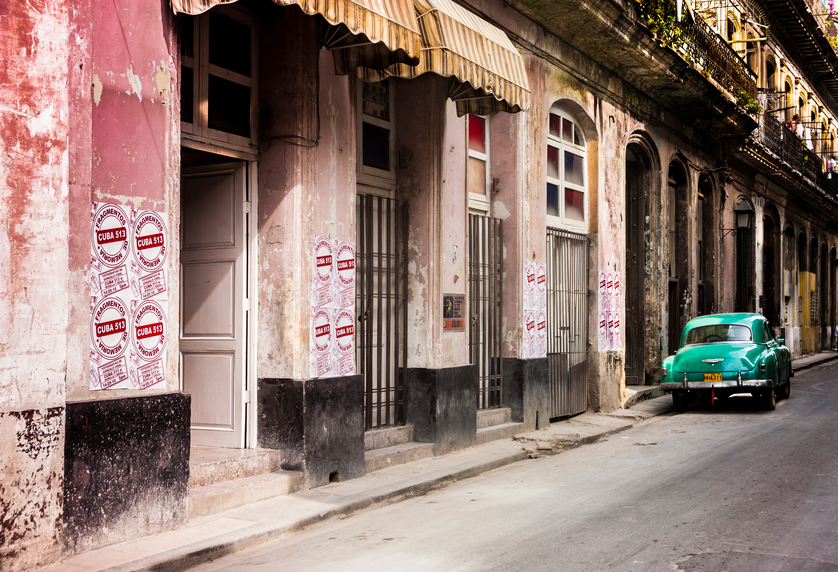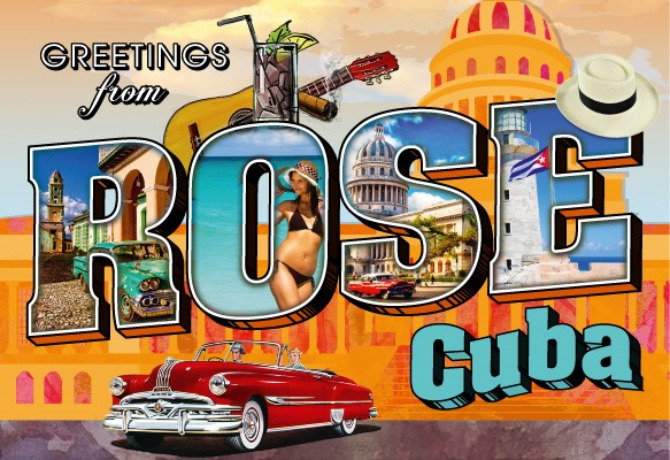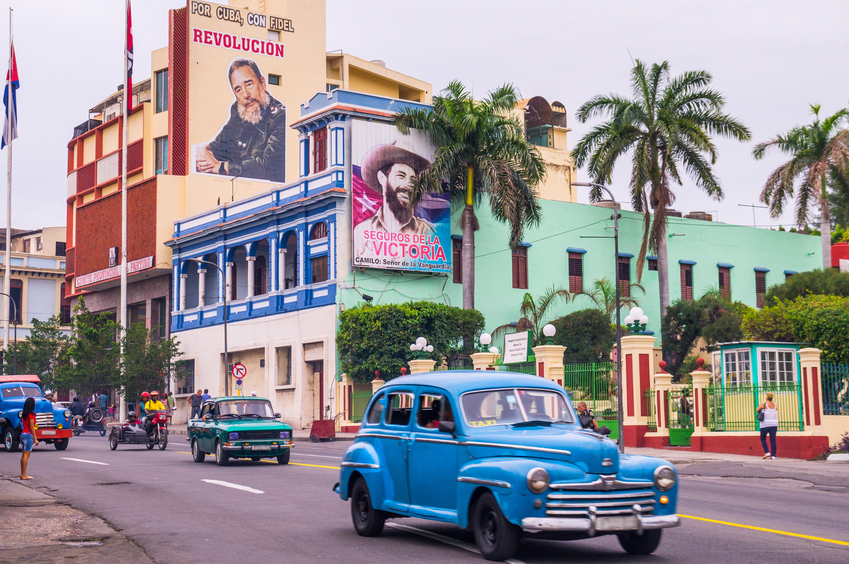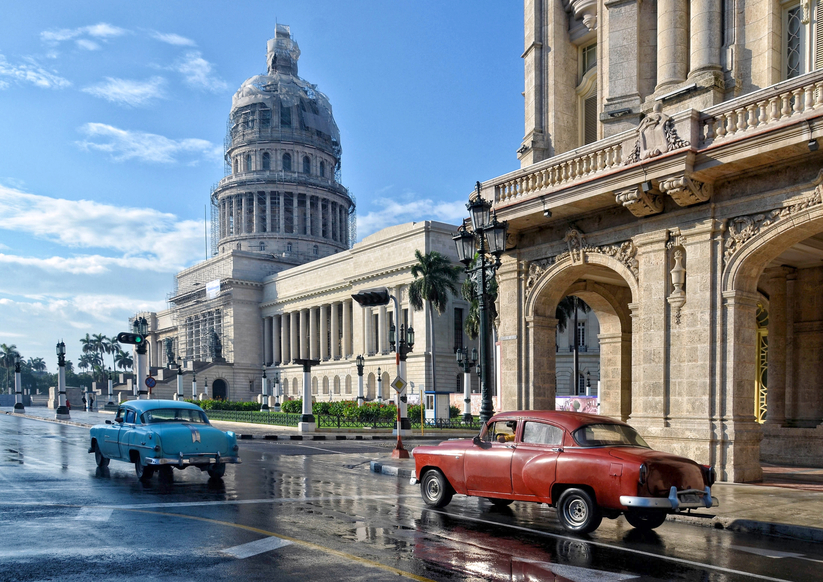Cuba is slowly opening for business for brands and media companies. Ben Bold explores the hurdles facing marketers in their attempts to gain a foothold on the island of Castro and Communism.
In 2006, Cuban leader Fidel Castro began wearing Adidas tracksuits in public. While his decision to ditch the military fatigues in favour of more casual garb was reportedly based on comfort (he was recuperating from an operation), the image of the revolutionary in Adidas gear is a neat metaphor for Cuba’s increasingly relaxed stance on overseas brands establishing a presence in the communist country.
A general loosening of trade regulations in a bid to attract outside investment, and last year’s agreement between the US and Cuba to restore diplomatic relations after half a century of Cold War, hostility are expected to have profound implications for the Cuban economy.
The questions is whether, and how quickly, Western brands and media businesses can establish a foothold in this highly complex market.
There are no two ways about it – reaching a largely untouched population of 11m consumers is a hugely attractive prospect for brands and agencies. But when government regulations largely prohibit brands from advertising their wares, it is a prospect rife with complications.
Yet a growing number of brands are undaunted. In January, Unilever announced that it is building a $35m homecare factory in a partnership with state-owned Intersuchel. When it opens in early 2017, the factory will manufacture brands for sale in Cuba, including Sedal, Rexona, Omo, Lux and Close-Up.
There also are a handful of agencies making moves.
WPP wasted no time in launching operations in Cuba, installing an executive in Havana via a partnership with state-owned Palco Group.
Sir Martin Sorrell, WPP’s founder and CEO, told M&M Global that his group’s Havana-based operation is “the only international communications services group with a stable presence on the island”.
“This allows us to guide our international clients interested in investing in Cuba and to support Cuban institutions and organisations wanting to internationalise their products and services,” he says.
Marketing revolution
The opening of doors – albeit by a crack – to overseas business marks a dramatic turnaround. Following the 1959 revolution, the vast majority of Cuba’s shops were shut down and consumers instead had to use their libreta rationing booklet to buy state-approved, unbranded goods from government-run distribution centres.
For years, Cuba’s product landscape was defined by officially-sanctioned, state-produced goods and, accordingly, little choice. However, in more recent years Cuba’s attitude to both domestic and overseas private sector has relaxed, particularly since Raúl Castro became president in 2008.
This has meant that the likes of Heineken have been allowed to launch initiatives such as donating refrigerated lorries to the Ministry of Trade, which can use them for whatever purposes the department sees fit, giving the Dutch brewer a brand presence on the roads of Cuba.
Rose Marketing, which in 1989 entered the former Soviet Union and is now headquartered in Moscow, is another agency making inroads into Cuba.
“More than half a million Cuban-Americans are travelling laden with suitcases full of branded goods, such as shoes, perfumes and cell phones”
John Rose, its founder and chief executive, told M&M Global that the group is in the process of building a local team and setting up with a local office and via partnerships with Cuba-based partners.
“We’re starting to do projects and are about to launch more significant campaigns,” Rose says.
Media agency network Local Planet, which brings together agencies from local markets under a centralised offering for global clients, has recently signed up Cuba-based agency EBM (Eurobusiness Market) – and will be speaking at next month’s Festival of Media LatAm 2016. The agency has operated in Cuba for 12 years, working for both state enterprises and foreign brands across merchandising, fair marketing, event promotions, and promotions on social networks.
“We have also developed several campaign spots for foreign clients for their activity outside Cuba,” explains EBM chief executive Manuel de la Rica. “Most recently, we are working on the sponsorship of cultural and sporting events. However, everything is easing up slowly, and in a short time, I hope we can act as in any Western market.”
Brand ignorant?
Given the infancy of Cuba’s more liberal approach to Western brands arriving on its shores, it would be forgivable to presume that the Cuban population is largely brand-ignorant. But this is the not the case, according to Emilio Morales, president and chief executive of Miami-based The Havana Consulting Group, which specialises in market intelligence and produces the THCG Business Reports, a tool for entrepreneurs and companies interested in the Cuban marketplace.
“Cubans know many brands,” he explains. “Why? There is actually a very large external influence from Cubans living abroad and tourists visiting the island. In recent years more than 3.5m tourists annually visit the island. This includes more than half a million Cuban-Americans travelling laden with suitcases full of branded goods, such as shoes, clothing, perfumes, cell phones and appliances of all kinds.
Sorrell notes that the average adult consumer behaviour is “mainly based on price and availability criteria, and to a lesser degree on brand preference”, but adds: “That behaviour is changing among Cuban urban youth, who are more familiar with brands.
“Except for a few unique sectors, international brands will find a willingness to experiment among consumers, if they are able to communicate with sensitivity to the local culture,” says Sorrell.
Meanwhile, EBM’s de la Rica claims that – with Cuba’s economically active population of five million, around 1.2 million of whom are also working in the private sector – “the average Cuban is a voracious consumer” with a high proportion of disposable income.
“It is logical if we think that health and education are free and transport, energy and food are heavily subsidised by the state, the Cuban people do not have a savings culture,” he says. “All of their income is spent on travel, tourism, quality clothing, restaurants, entertainment etcetera.”
Media challenge
But while Western brands are physically ending up in the hands of Cubans, targeting consumers with brand messages via traditional media remains challenging.
“The problem in Cuba is that it’s a big overstatement to say that advertising is happening,” says Rose. “The problem is not a regulatory issue, but an ideological one. The mass media is run by the state, by the Communist Party, which controls the newspapers and TV. Their guiding principle is not to promote capitalism.”
Interestingly, de la Rica is quick to dismiss the notion that Cuban traditional media is ad-free.
“There are media that already allow advertising,” he says. “And those include some state media outlets, radio stations, an international television channel that can also be seen in the island, phone books, and magazines covering art and culture, economics and business and classified ads.”
Cuba is also home to other general and lifestyle publications edited by entrepreneurs that live in a kind of “legal limbo” until the new Ley de Prensa press law is approved, and some foreign media published with the permission of the International Press Center of the Ministry of Foreign Affairs.
“International brands will find a willingness to experiment among consumers, if they are able to communicate with sensitivity to the local culture” – Sir Martin Sorrell, WPP
Digital is on the rise, especially thanks to the proliferation of free Wi-Fi hotspots, with 65 being installed this year alone. According to official data (which de la Rica suggests underestimates the reality), in 2014, the number of internet users grew to more than three million, around 27% of the population.
The term ‘legal limbo’ could equally be applied to a digital medium that is playing an increasingly influential role in the lives of Cuban consumers.
The hugely popular El Paquete Semanal (The Weekly Package) is quite literally hand-delivered online content, a terabyte collection of pirated digital material, including TV series, video games, apps and movies. El Paquete is updated every Sunday, allowing consumers to take their terabyte hard disk and have it filled with new content at a cost of just 10 CUC (around $1).
“The new content reaches users in less than 24 hours via a network of distributors throughout the island,” explains de la Rica. “Its coverage has grown, it does not operate with any licence, but its current penetration in Cuban society is such that it would be a mistake to ban it. There is little data about its diffusion. For example, it is known that in Havana it reaches 39% of the population and Havana has 2.3 million inhabitants, but intuitively we know that it is more than 39% since a customer of the weekly package then in turn rents it to a friend or neighbour for $1 dollar.”
According to Morales, there are moves to establish a paid cable television network, which could be financed in part through advertising revenue.
“While the investment project included in the investment portfolio does not explicitly mention advertising, it is obvious that one of the main ways for financing a paid cable television channel would be commercial advertising,” he says.
Regulatory hurdles
But as things stand, brands looking to raise awareness must typically take a more below-the-line approach to their marketing. In-store activity is therefore prevalent. For example, Heineken uses point-of-sale displays to reach Cuban consumers.
Foreign brands harbouring aspirations to enter the Cuban marketplace in an official capacity will have to jump various government and regulatory hurdles.
De la Rica cites fashion and clothing brands including Mango, Benetton, Paul & Shark and Nike, all of which have had to form agreements with various state-owned store chains, which act as their distributors.
“The challenge is that there is an antiquated system of entry into the market, no way of just walking in and selling goods in-store,” says Rose. “You have to go through a regulated process. But once you get over these significant hurdles, there are opportunities and multiple customers within the government structure.”
Morales highlights the last five years as a preparing of the ground for the reintroduction of advertising.
“Today, signs and billboards advertise the services of fancy paladares (private restaurants), hostels, beauty shops, small shops to service cell telephones, and other small businesses authorised under the self-employment legislation,” he says.
“Self-employed businesspersons have been allowed to advertise in the telephone directories and more recently, the National Information Agency, a government institution, has created a website with classified advertising.
“I believe that in the next two years, maybe less, the TV advertising will coming back after 57 years absent,” claims Morales.
For Rose, experimentation lies at the heart of its work for clients wanting a piece of the Cuban market.
“Cubans haven’t caught up with the idea that advertising can be good,” he says. “We have been putting forward the idea that marketing doesn’t have to be evil.
“When we’re developing programmes for clients, what’s uppermost in our minds is how to make it palatable – the sense that it’s something good for the population. For brands there are opportunities to be there now because it’s only going to get more expensive. The greatest opportunity is for mid-sized brands.”
WPP’s presence in Cuba is also no flash in the pan. The group is in it for the long term, Sorrell insists. “We are alive to Cuba’s economic evolution and the changes happening there, and we see a role in supporting and partnering with Cuban organisations, as well as overseas clients, as they go through these changes.”
Political change is also on the horizon, with Raul Castro – architect of Cuba’s enhanced role on the global stage – set to leave government in 2018.
“Whoever succeeds him in the government will take some time to control the state apparatus and then will accelerate the reforms,” says de la Rica.
”This does not mean that from now and until then there will be no changes, but we have to take things with the patience and the wisdom of the Cuban ‘guajiros’ (peasants). The internet will develop at full speed and, of course, over the next three years Cuba will reach levels similar to the West in number of users.”
At next month’s Festival of Media LaAm 2016 in Miami, the session ‘Capitalising on Cuba’ will explore how brands successfully immerse themselves with the evolving Cuban market. Click here for more details on how to attend.












